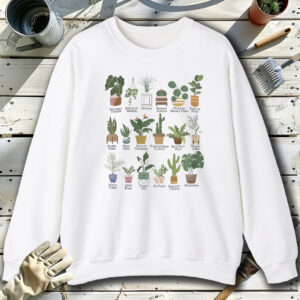Table of contents
Grape Ivy

Latin Name: Cissus rhombifolia ‘Ellen Danica’
Category: Hanging
Family: Vitaceae
Origin: Cultivar
Climate: Subtropical
Growing Zones: 11, 9
Care Instructions
The Grape Ivy (Cissus rhombifolia ‘Ellen Danica’) is a subtropical plant that originates from Cultivar. This hanging plant belongs to the Vitaceae family and is well-suited for growing in USDA zones 11, 9.
Complete Care Guide for Grape Ivy (Cissus rhombifolia ‘Ellen Danica’)
Watering Requirements
Grape Ivy, or Cissus rhombifolia ‘Ellen Danica’, thrives best with a moderate watering schedule. It is essential to allow the top inch of soil to dry out between waterings. Overwatering can lead to root rot, so it’s crucial to ensure that the pot has adequate drainage. During the growing season, which typically spans from spring to early fall, water the plant more frequently, about once a week. In the winter months, reduce watering to every two weeks, as the plant enters a dormant phase. Always check the moisture level by sticking your finger into the soil; if it feels dry, it’s time to water.
Light Conditions
Grape Ivy prefers bright, indirect light but can also tolerate low light conditions. However, for optimal growth and vibrant foliage, place it in a location where it can receive filtered sunlight. Direct sunlight can scorch the leaves, leading to unsightly brown patches. If you notice the plant becoming leggy or the leaves losing their vibrant color, it may be a sign that it needs more light. A north or east-facing window is ideal, but if you are using artificial lighting, ensure it is a full-spectrum light to mimic natural sunlight.
Soil Preferences
Grape Ivy thrives in well-draining potting soil that retains some moisture without becoming soggy. A mix of standard potting soil with added perlite or coarse sand can provide the right balance of drainage and moisture retention. The ideal pH level for Grape Ivy is slightly acidic to neutral, around 6.0 to 7.0. Fertilization should be done during the growing season with a balanced, water-soluble fertilizer every 4-6 weeks. In the winter, reduce or eliminate fertilization as the plant’s growth slows down.
Pests and Diseases
Grape Ivy is generally resilient but can be susceptible to common houseplant pests such as spider mites, mealybugs, and aphids. Regularly inspect the undersides of leaves and stems for any signs of infestation. If you notice pests, treat them promptly with insecticidal soap or neem oil. Additionally, Grape Ivy can suffer from fungal diseases if overwatered or if humidity levels are too high. Ensure good air circulation around the plant and avoid wetting the leaves when watering. If you encounter leaf spots or wilting, it may indicate a fungal issue, which can often be remedied by adjusting watering practices and improving air circulation.
Special Care Tips
To keep your Grape Ivy healthy and thriving, consider the following special care tips: First, regularly prune the plant to encourage bushier growth and remove any dead or yellowing leaves. This not only enhances the plant’s appearance but also promotes better air circulation. Additionally, Grape Ivy can benefit from occasional misting, especially in dry indoor environments, as this helps to maintain humidity levels. If you want to propagate your Grape Ivy, take cuttings in the spring and place them in water or directly into soil. Lastly, be mindful of temperature; Grape Ivy prefers temperatures between 60°F to 80°F (15°C to 27°C) and should be protected from drafts and sudden temperature changes.








